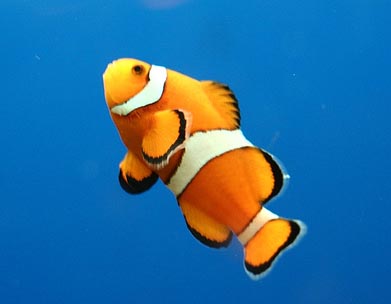How reef fish use their fins to ‘fly’ underwater against currents
 Canberra, June 18 : A team of researchers has found how some reef fish use their fins to ‘fly’ underwater, allowing them to survive in the sometimes cyclonic currents surrounding coral reefs.
Canberra, June 18 : A team of researchers has found how some reef fish use their fins to ‘fly’ underwater, allowing them to survive in the sometimes cyclonic currents surrounding coral reefs.
According to a report in ABC Science, the research was led by Chris Fulton from The Australian National University, who noticed the wing-like fins on the parrotfish during surveys of coral reefs in Australia.
“We were surveying different reef fish across different gradients on the Great Barrier Reef and we noticed that some of the ones that lived in the very shallow areas were very abundant -- lots of individuals of just a few species,” said Fulton.
“When we looked at those few species in a bit more detail, we noticed something a bit unique about their fins - a wing-shaped fin,” he added.
The wing shape allows fish such as parrotfish, wrasse and surgeonfish to fly through the water using a figure-of-eight pattern.
“Most fish when they move their pectoral fins on the side of their body, they move them just like you row a boat - they have a power stroke and then a recovery stroke,” said Fulton. “By doing that they are only creating thrust half the time,” he added.
According to Fulton, fish with wing-shaped fins keep them spread at all times and sweep in a figure-of-eight pattern that constantly generates thrust.
“They do this by inclining their fins at just the right angle to create lift from the water flowing over the fin, similar to the way air moves over the wing of a bird to propel them through their air,” he said.
The extra push that the wing-like fins give the fish helps them survive in the shallow and sometimes turbulent waters surrounding coral reefs, said Fulton.
“They’re dealing with waves crashing on to them all day, everyday, and those crashing waves create water motions that are extreme,” he said.
Fulton and his colleagues observed the fish swimming around the reef and in flow tanks, which allowed them to record the fish’s movement on high-speed video cameras.
They found some species could move at up to 10 body lengths per second. By comparison, Olympic champions reach speeds of just 1.3 body lengths per second, and then only for the brief 22 seconds of the 50-meter freestyle sprint.
According to Fulton, the US Office of Naval Research has taken interest in the research, looking to use it in the development of future remote control submersibles. (ANI)